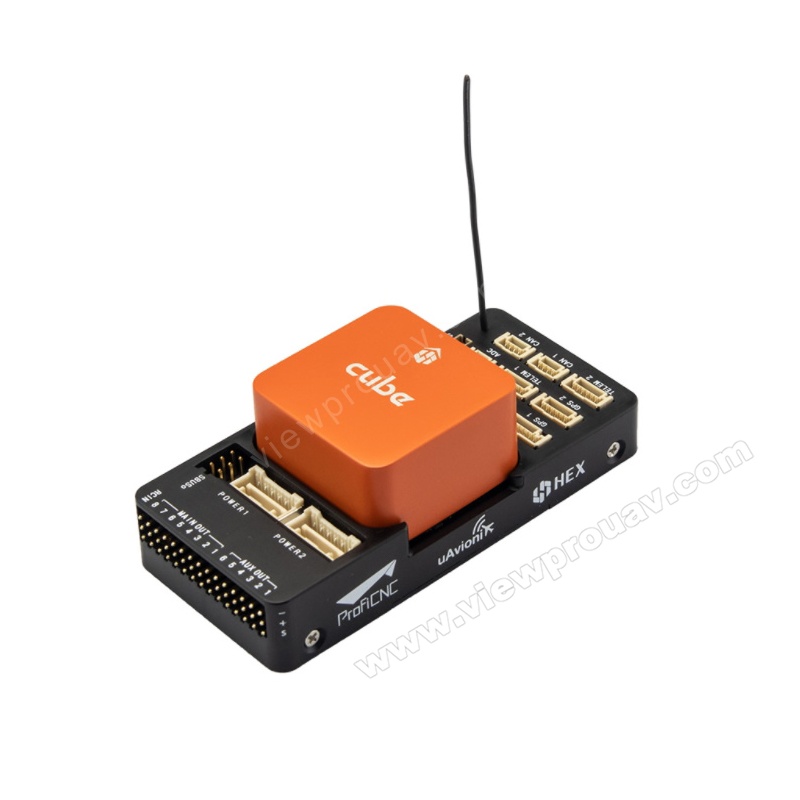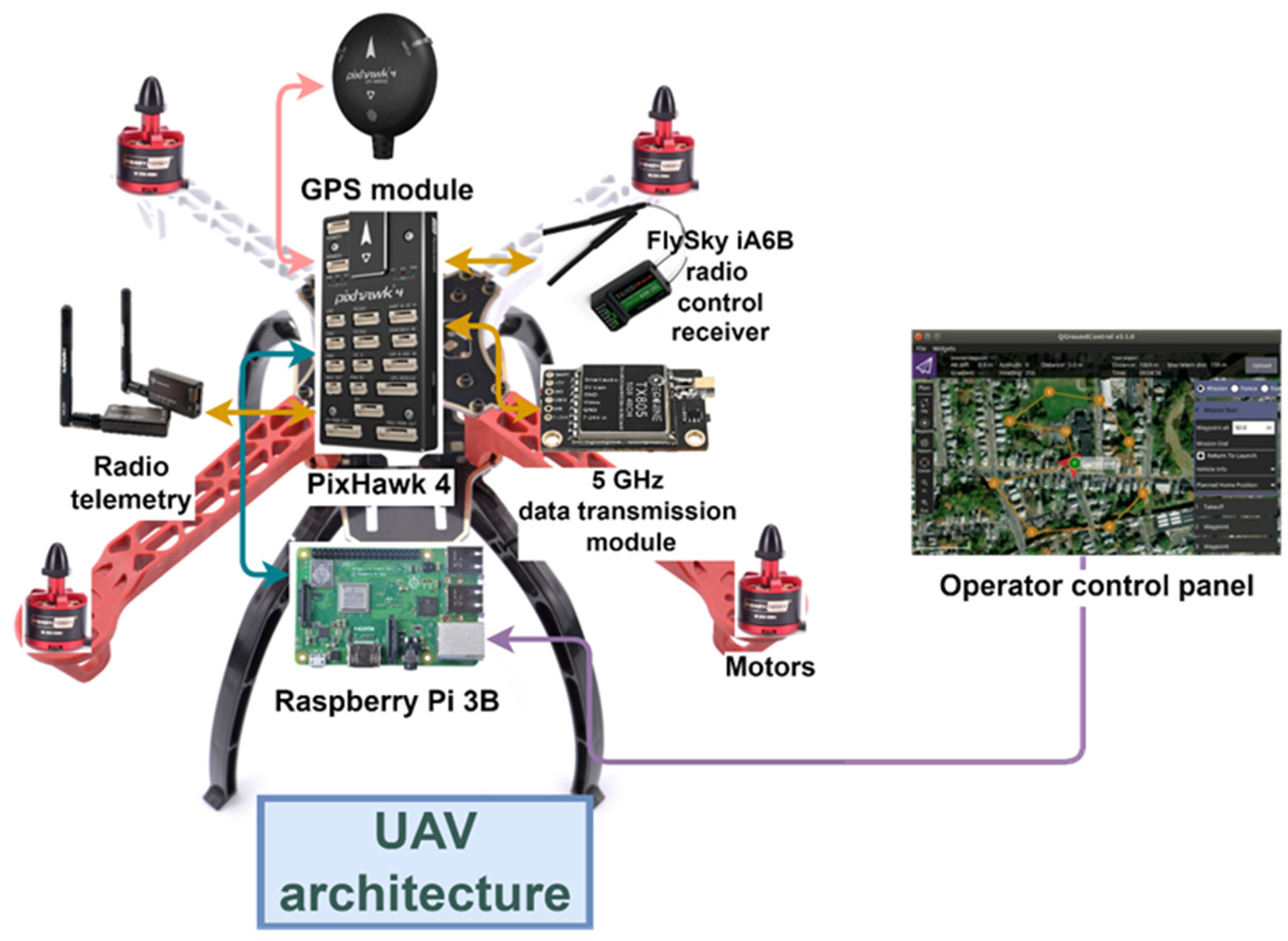Unequaled Accuracy: SparkNavi Drone Flight Controller and GNSS/INS Made in Taiwan
Unequaled Accuracy: SparkNavi Drone Flight Controller and GNSS/INS Made in Taiwan
Blog Article
Discovering the Role of Drone Trip Controllers in Enhancing Trip Stability and Navigation Performance
The innovation of drone modern technology has considerably raised the significance of flight controllers, which work as the brain of these airborne vehicles. By integrating real-time data from a selection of sensing units, trip controllers enhance flight security and navigating performance, making certain that drones can operate smoothly also in intricate settings. This discussion will discover the key elements that add to these enhancements, along with the effects for the future of self-governing trip. What advancements lie ahead that could better change the capacities of drone flight controllers?

Understanding Flight Controllers
Flight controllers are important parts in the performance of drones, acting as the minds that support and handle flight operations. These advanced tools procedure data from various sensors, including accelerometers, gyroscopes, and GPS, to ensure that the drone maintains its intended flight path. The flight controller interprets this information and executes commands based upon pre-defined formulas, allowing the drone to reply to ecological modifications, such as wind or challenges.
The main function of a flight controller is to keep security throughout trip. It accomplishes this by making real-time modifications to the drone's motors and control surfaces, ensuring balance and control. In addition, modern-day trip controllers incorporate advanced attributes such as waypoint navigating, permitting automated flight courses and enhanced operational effectiveness.
Understanding the design of flight controllers is essential for both experts and hobbyists. They usually contain a microcontroller, firmware, and various user interfaces for sensing unit input and communication. As modern technology breakthroughs, trip controllers have become extra qualified and compact, integrating expert system to enhance decision-making processes and adjust to complex trip situations. This development indicates a critical advancement in the drone industry, leading the way for a lot more sophisticated applications and much safer operations.
Trick Components of Flight Security
Attaining optimal flight security in drones depends on numerous essential elements that operate in concert to guarantee controlled and smooth procedures. Central to this security is the flight controller itself, which processes data from different sensing units to keep the wanted flight attitude. This includes accelerometers and gyroscopes that determine movement and alignment, allowing for real-time changes to the drone's position.
Another important part is the digital rate controllers (ESCs), which manage the power supplied to the motors. By finely tuning motor speeds in response to flight controller commands, ESCs help maintain equilibrium and combat disruptions triggered by wind or abrupt activities.
In addition, the layout of the drone's structure plays a pivotal role in trip security. A well-structured structure decreases vibrations and enhances the overall aerodynamic profile, contributing to smoother trip features. The integration of sophisticated formulas within the flight controller help in anticipating modifications, guaranteeing a responsive and versatile flight experience.
With each other, these parts develop a cohesive system that boosts a drone's security, permitting for exact maneuvering and boosted performance in various trip problems.
Navigation Performance Methods
Efficiency in navigating is crucial for enhancing drone operations, specifically in complicated environments. Reliable navigation strategies improve the ability of drones to go across difficult surfaces and prevent barriers, consequently improving functional efficiency and safety.
One famous technique is the application of advanced general practitioners and inertial dimension systems (IMUs) that give accurate area tracking and alignment data. These innovations permit drones to calculate optimum flight courses in real-time, taking into consideration numerous aspects such my link as wind problems and possible challenges.
An additional technique includes the usage of algorithms for path preparation and optimization. Formulas such as A * and Dijkstra's algorithm can be released to identify one of the most reliable route while lessening energy usage and flight time. Incorporating maker learning models can allow drones to adaptively discover from their atmospheres, boosting navigating capabilities with experience.

Influence On Autonomous Drones
The combination of innovative navigation techniques has greatly transformed the abilities of independent drones, allowing them to operate with greater autonomy and precision. SparkNavi drone flight controller and GNSS/INS made in taiwan. These enhancements are mostly associated to innovative trip controllers that make use of real-time information handling and sensing unit blend, permitting drones to browse intricate atmospheres seamlessly
The effect on independent drones expands past simple navigation; it encompasses enhanced obstacle evasion, boosted security throughout dynamic conditions, and increased goal integrity. By leveraging formulas that include maker discovering and man-made intelligence, drones can adapt to transforming scenarios, making notified decisions that optimize their trip paths while minimizing threats.
In addition, the implementation of durable trip controllers has promoted the implementation of complicated jobs, such as airborne examinations, shipment services, and farming tracking, with minimal human treatment. This ability not Recommended Reading just streamlines procedures but also lowers human mistake, thereby boosting total safety and security.
Because of this, the operational extent of autonomous drones has actually broadened significantly, making them important tools in numerous industries. Their capacity to do successfully in diverse circumstances underscores the essential function that progressed flight controllers play fit the future of unmanned aerial systems.
Future Fads in Flight Control
Often, advancements in flight control modern technology are poised to redefine the landscape of drone operations in the coming years. Arising fads suggest a substantial shift towards improved artificial knowledge (AI) combination, allowing flight controllers to process real-time information extra efficiently. This development will certainly facilitate improved decision-making abilities, allowing drones to adapt to vibrant ecological problems autonomously.
Moreover, the implementation of artificial intelligence algorithms is expected to improve anticipating maintenance, thus lessening downtime and expanding the lifecycle of drone parts. This proactive approach to maintenance will certainly be essential as drone applications broaden across different markets, from farming to logistics.

.png)
Finally, innovations in safe and secure interaction methods will certainly resolve safety and security and regulatory concerns, ensuring that drones can operate flawlessly in congested airspaces (SparkNavi drone flight controller and GNSS/INS made in taiwan). Jointly, these fads aim in the direction of a future where trip control systems are not just smarter and a lot more reliable but additionally qualified of operating securely in a progressively integrated airspace
Final Thought
To conclude, drone trip controllers are essential to improving trip security and navigation effectiveness through the innovative processing of sensing unit data. By keeping optimal trip mindsets and utilizing sophisticated algorithms for path optimization and obstacle avoidance, these controllers dramatically add to the freedom and operational security of drones. As modern technology remains to develop, even more advancements in flight control systems are prepared for, guaranteeing better efficiency and increased capabilities in the realm of unmanned airborne vehicles.
By incorporating real-time information from a selection of sensors, flight controllers improve flight security and navigation performance, ensuring that drones can operate smoothly also in his explanation complicated settings.Flight controllers are important elements in the performance of drones, offering as the brains that support and handle flight operations. Furthermore, modern flight controllers include advanced features such as waypoint navigation, permitting for automated trip paths and improved operational effectiveness.
Central to this stability is the trip controller itself, which processes data from numerous sensors to keep the desired flight attitude.In final thought, drone trip controllers are indispensable to boosting flight security and navigation effectiveness via the innovative handling of sensor information.
Report this page